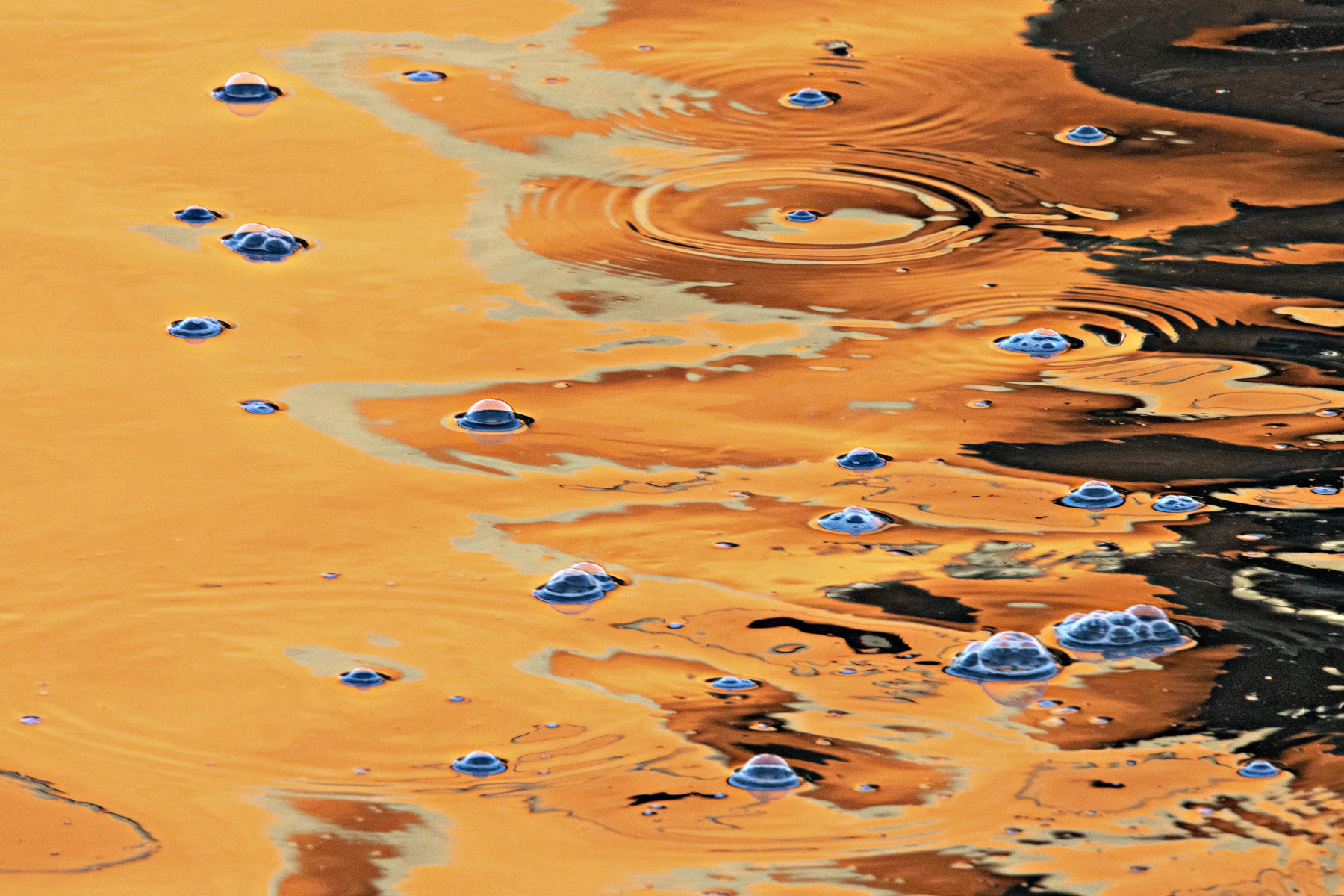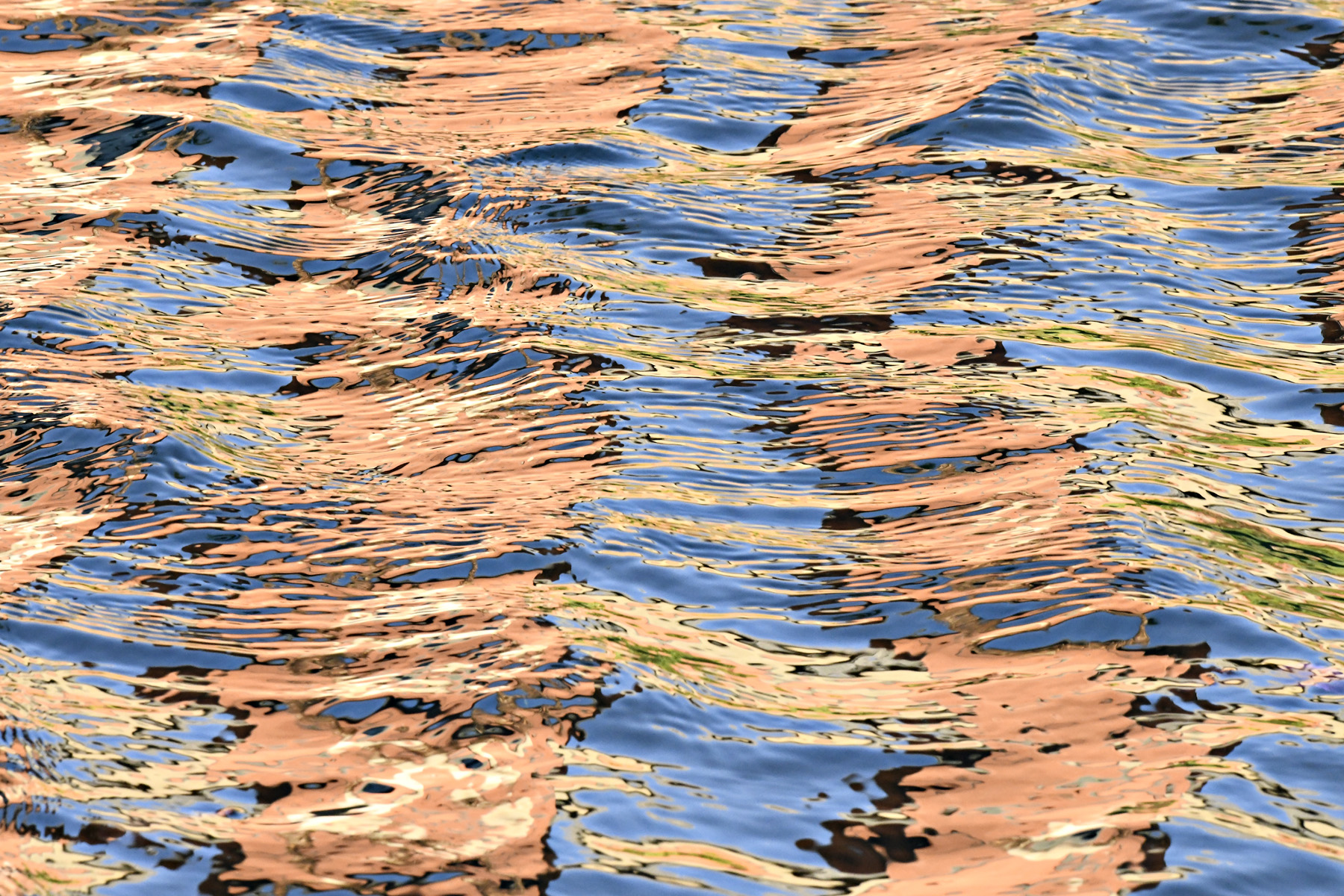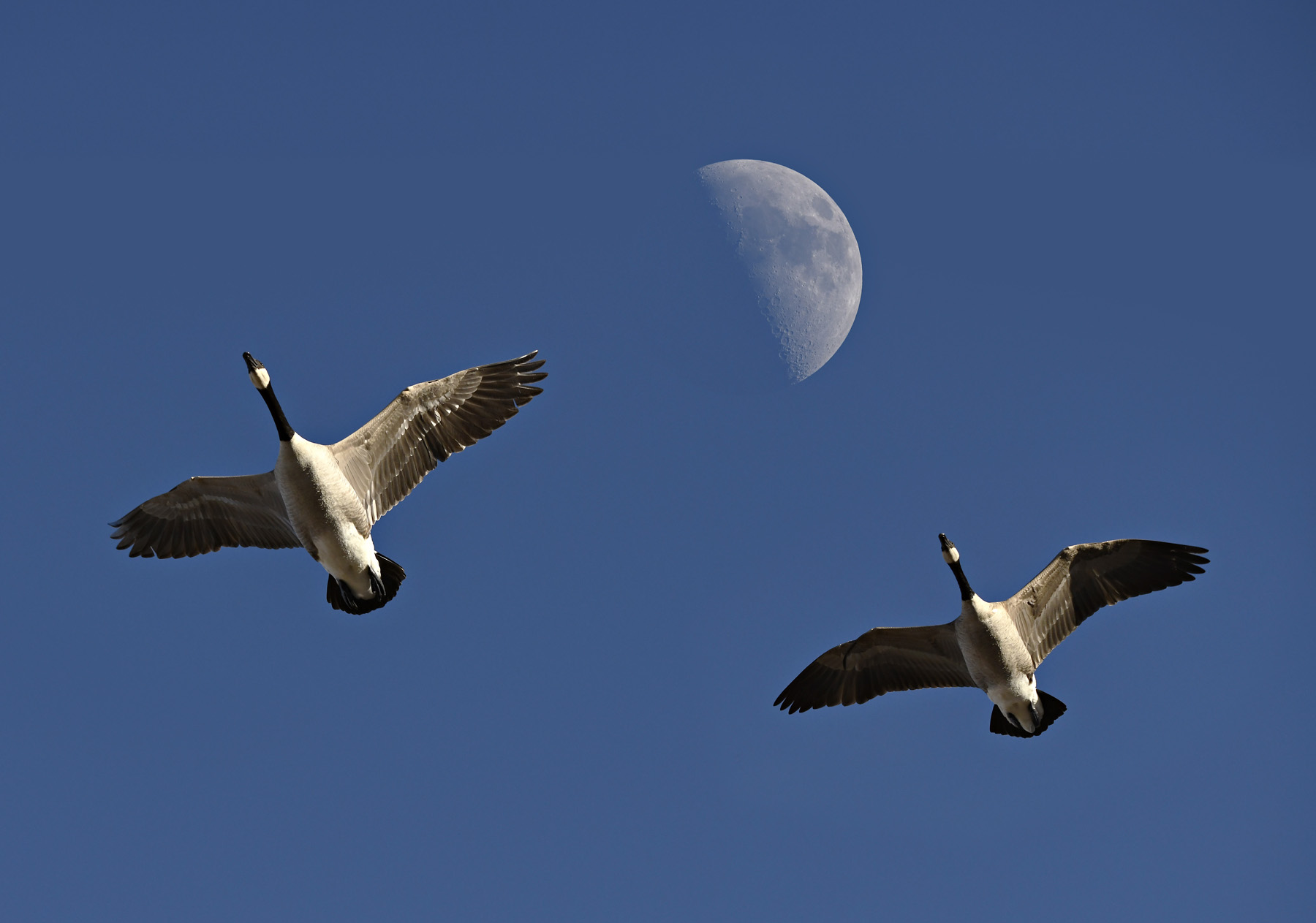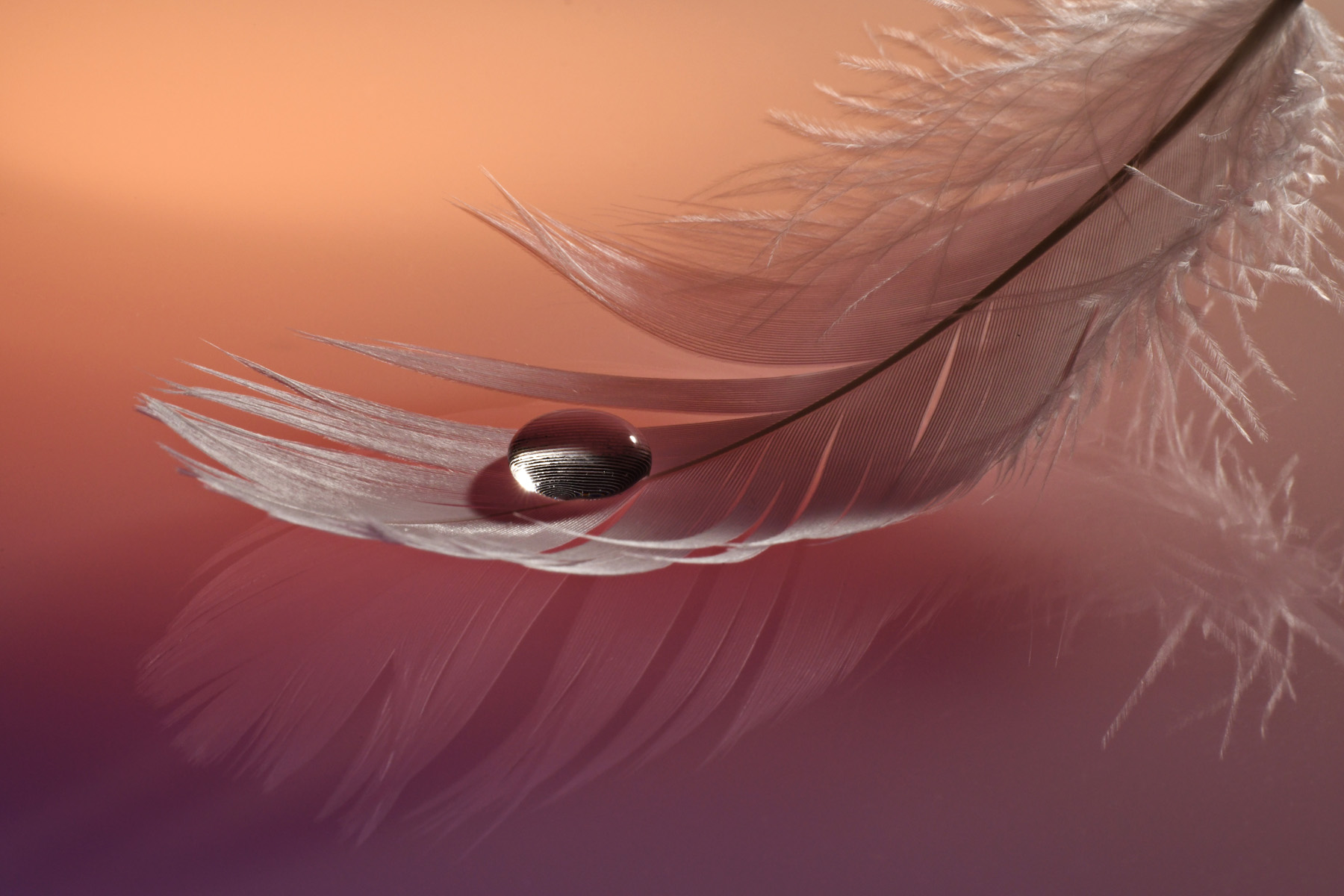Soap Bubbles
I have been photographing soap bubbles in my studio on many occasions for more than ten years now. Like some other types of photography, such as refractographs and wave reflections, there is a bit of a treasure hunt quality to photographing them. Their geometry is continually changing as they mature and finally pop. The interference patterns on their surface change even more quickly. With the COVID restrictions this year I have done some more soap bubble shots in the last couple of months.




It is the geometry and the interference patterns that make bubbles so interesting. Soap bubbles always assume the shape with the smallest possible surface area for a given volume. This means single bubbles form spheres. In a plane two bubbles meet as circles intersecting at a line. For more than two bubbles in a plane the bubbles will meet in groups of three with all angles at the intersections being 120 degrees. This means they form hexagons (just like honey combs).




In three dimensions the same principle of minimum surface area for a given volume applies. Two bubbles will meet at a common circle with the angle being 120 degrees. As with the planer case we can see from experiment that bubbles always meet as triples of lines with all angles being 120 degrees. Interestingly, while the geometry has been know for thousands of years, even the simplest planer case was not proved mathematically until 1993 and the proof for three or more bubbles in space is still open.




Thin-film interference is a natural phenomenon in which light waves reflected by the upper and lower surfaces of a thin transparent film will interfere with each other. Certain wavelengths (colors) are intensified while others are reduced depending on the thickness and index of refraction of the film. This constructive or destructive interference produces narrow reflection or transmission bandwidths. The observed colors are rarely separate wavelengths but a mixture of various wavelengths. Thus, the colors observed are rarely those of the rainbow, but rather browns, golds, turquoises, teals, bright blues, purples, and magentas.




I have shot bubbles using many different set-ups in the studio. My favorite set-up uses four sheets of translucent Plexiglas about 2 ft. x 2 ft. to form a shooting tunnel. The rear of the tunnel was closed off with a sheet of black mat board. A spray can lid is placed in the tunnel and filled with bubble solution. The camera with a macro lens was placed in front of the tunnel and focused on the front edge of the spray can top. I have used various combinations of flash units underneath, above and to the sides of the tunnel along with gels and colored mat board to get different effects. This type of set-up gives the largest possible range of results.




I have tried many other set-ups shooting either a single bubble, multiple bubbles or a bubble film. The images created can be very striking. The whole process is fascinating to me since you never can tell what kind of pattern you will get or how it will change with time.




Cheers,
Mike Stoy






















































 A type of photography that I have become fond of in the last few years is refractographs. These images are created using a camera without a lens on the front of it. First you need a really dark room since any stray light can muddy up the image. Next you need a piece of glass or some other transparent material. In my experience thin, high quality glass works best. I have been using the bottom of crystal wine glasses. The glass is fixed in place with a light stand and clamp or something similar. Then a small bright point of light is set up about ten feet away from the glass with the light shining on the glass at about a forty five degree angle. I am using a bright LED flashlight with a piece of aluminum foil over the front of the light. I poke a very small hole in the foil with a needle. Do not use a laser since it could damage the camera sensor. Finally the camera is placed on a tripod very close to the glass.
A type of photography that I have become fond of in the last few years is refractographs. These images are created using a camera without a lens on the front of it. First you need a really dark room since any stray light can muddy up the image. Next you need a piece of glass or some other transparent material. In my experience thin, high quality glass works best. I have been using the bottom of crystal wine glasses. The glass is fixed in place with a light stand and clamp or something similar. Then a small bright point of light is set up about ten feet away from the glass with the light shining on the glass at about a forty five degree angle. I am using a bright LED flashlight with a piece of aluminum foil over the front of the light. I poke a very small hole in the foil with a needle. Do not use a laser since it could damage the camera sensor. Finally the camera is placed on a tripod very close to the glass.





































































